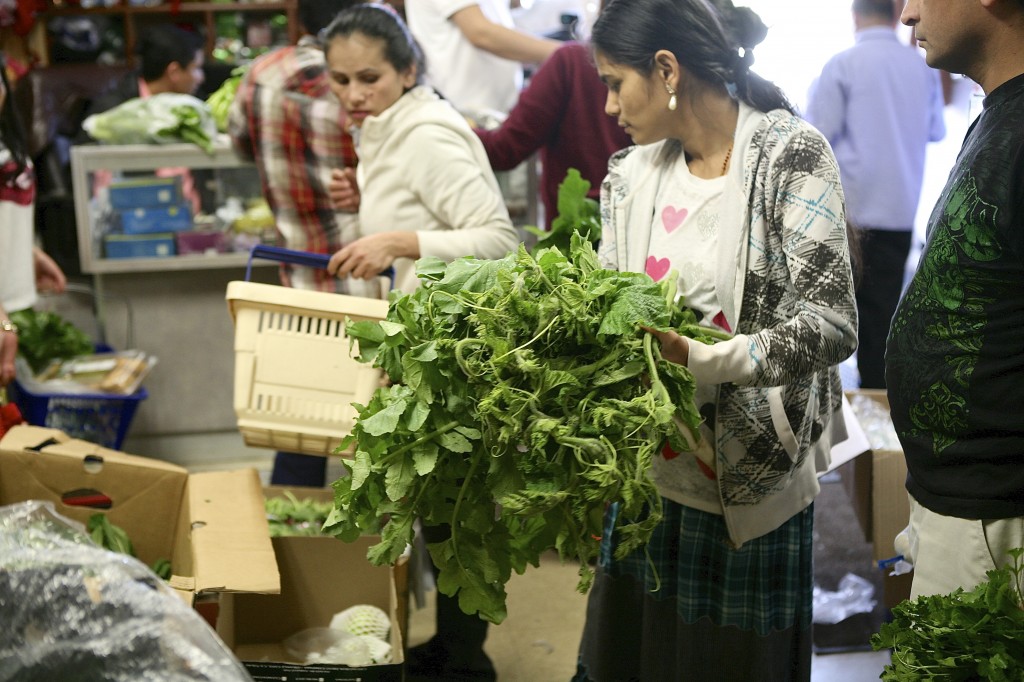(Editor’s Note: Click here for a translation in Nepali | गुगल अनुवाद लागि यहाँ क्लिक गर्नुहोस् | Gugala anuvāda lāgi yahām̐ klika garnuhōs)
When loyal customer Devi Siwakoti enters the All Asian Store, the first and largest of four Nepali grocery stores in Syracuse, a thick waft of cumin, dill seeds and a sense of home greet him.
Flycatchers hang from the ceiling of the small market, which includes only four narrow aisles. A disarray of cardboard boxes of native foods, such as sinki (dried radish), garam masala (ground spices) and watana (fried peas), line the shelves and floor. Cans of gulab jamun, a spongy dessert soaked in rose-scented syrup, sit on top of each other. Nepali brands of miscellaneous items, such as cosmetics, blankets and comforters, soaps and laundry detergent, lie in another aisle. Groups of families filter in and out.
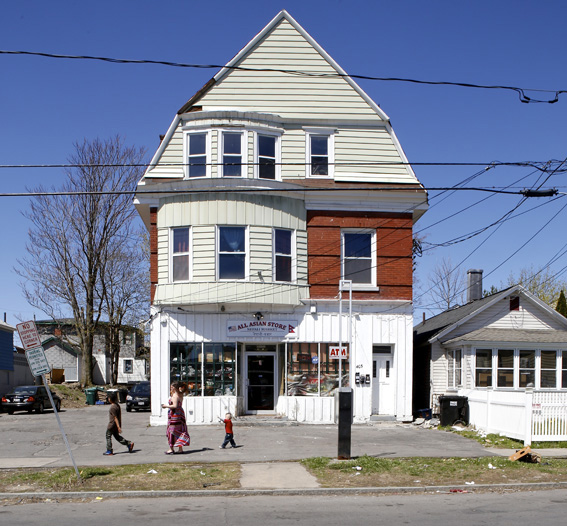
Michael Davis Photo | Syracuse New Times
Customers come for groceries, but they also come to chat. Everyone who enters speaks Nepali. Siwakoti says he stops in the store at least once, sometimes twice, per day. He takes a bite of an unpaid-for plum as he talks in Nepali to Bharath Phuyel, the co-owner, cashier and lone employee working in the store. Phuyel, 26, wears a brown newsboy cap, jeans, and two jackets on this winter day.
Siwakoti’s toddler rushes over to a low shelf with bags of Cheetos and KurKure, the Indian brand of the cheesy corn puffs. He chooses the Cheetos. He looks up at his father, shakes the bag, and begs for him to buy it. Siwakoti nods and puts the Cheetos on the counter. He then tries to negotiate the price of a bag of oranges and a crate of Cokes. Phuyel agrees and adds up the new total on a large calculator.
The All Asian Store is beside the All American Market on Pond Street on Syracuse’s North Side, where the majority of Bhutanese-Nepali refugees live. Bhutanese-Nepali refugees come here because they can’t find Nepali food at Wegmans or Tops. The store orders all of its products from a wholesaler in New York City, which receives everything directly from Nepal. Phuyel drives to Manhattan every week to pick up the items.
Phuyel has worked at the All Asian Store since it opened in late 2012. In the past two years, four more Nepali grocery stores as well as the first Nepali restaurant have opened their doors in Syracuse.
“There’s a huge demand in our community for this food,” says Jai Subedi, the owner of the All Asian Store. Subedi also works as a caseworker for InterFaith Works Center for New Americans and serves as the president of the Bhutanese Community of Syracuse (BCS). When he first arrived, he would walk five miles to a Nepali grocery store in DeWitt, because he didn’t own a car and felt desperate for Nepali food.
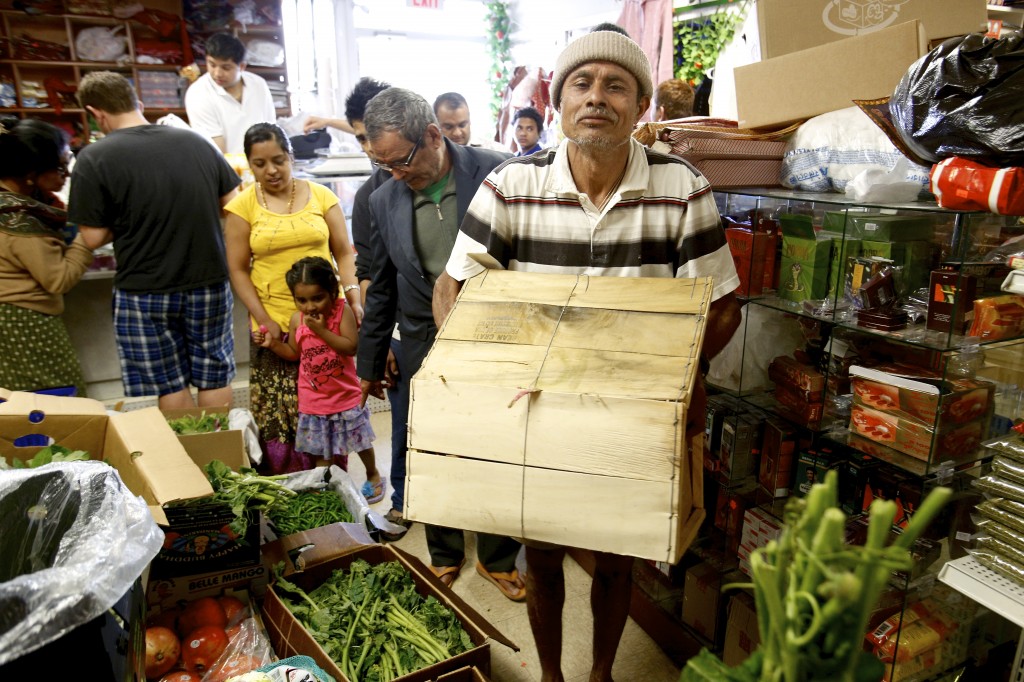
Michael Davis Photo | Syracuse New Times
The Bhutanese are one of the largest refugee groups in the United States. Almost 7,000 Bhutanese-Nepali refugees have resettled in New York state over the past six years, according to the 2014 Worldwide Refugee Arrival Processing System report. About 4,000 of them live in Syracuse.
Krishna Baskota, now an active board member of the BCS, fled Bhutan and its government’s ethnic cleansing policy at age 8 with his family in 1991.
“They put us into a truck and dumped us on a river bank,” he says. First, he lived with his family in a plastic tent near the Mechi River, a trans-boundary river on the border of Nepal. Many people died from freezing temperatures, malaria and diarrhea, he says.
Soon after, the United Nations High Commissioner for Refugees set up seven refugee camps in Nepal. Baskota lived in the Goldhap camp for 20 years. The UNHCR provided his family with two sets of clothes for two years and monthly food rations. In the Goldhap camp, he lived in a thatched hut made of mud, bamboo and green grass with eight other people. There, he learned English and worked as a math teacher.
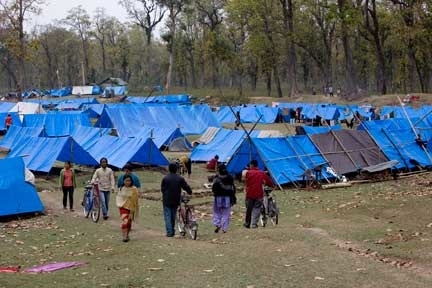
Photo: James Giambrone
The United States accepted the greatest number of refugees, starting in 2008. Although 25,000 people still live in two of the camps today, according to the UNHCR, Baskota expects them to relocate soon to either America, the United Kingdom, Canada or Australia.
The day after Baskota arrived in 2010, he worked with the Syracuse University Program for Refugee Assistance to teach English classes. “From the start, it felt like we needed a community,” Baskota says. He told himself, “If I have to start over, I will start over in the USA.” For him, this country’s initial letters instead stand for “U Start Again.”
Baskota defines his greatest accomplishment in the United States as his purchase of his house last year. “Even some people who were born and worked all their lives in this country can’t do that,” he says. “It’s the dream of the American people to buy a house. We achieved the American dream.”
His home also serves as a symbol of his family’s pride for their Bhutanese-Nepali heritage. Artificial peach vines hang from the doorframes instead of doors. Purple and white flowers hang from rainbow lights strewn throughout the house. Illustrations of Hindu gods and goddesses and photos of family members are posted on the living room wall. A blue chandelier hangs from the ceiling.
Baskota lives with his wife, Keshavi, who was his neighbor in the Goldhap camp, and his two children. He doesn’t spend much time at home, however, because he says he needs to provide for his family. He now works 12- to 16-hour days as a nurse on the cardiac unit at St. Joseph’s Hospital.
Like Baskota, many Bhutanese-Nepali refugees also work 16-hour days and thus will not have the opportunity to spend as much time with their families. The stresses of providing for the family, lack of social support and family conflict after resettlement can be risk factors for depression and even suicide among the Bhutanese-Nepali refugee community, says Baskota.
Last year, the Centers for Disease Control and Prevention and the Refugee Health Technical Assistance Center of the Massachusetts Public Health Department performed “psychological autopsies” of recent Bhutanese-Nepali suicide victims as well as a general survey of the population to determine rates of mental health disorders. It found that the rate of depression among the Bhutanese-Nepalis surveyed was 21 percent, nearly three times that of the general U.S. population. Most of the suicides occurred within a year of resettlement to the states, and the victims hanged themselves in all cases.
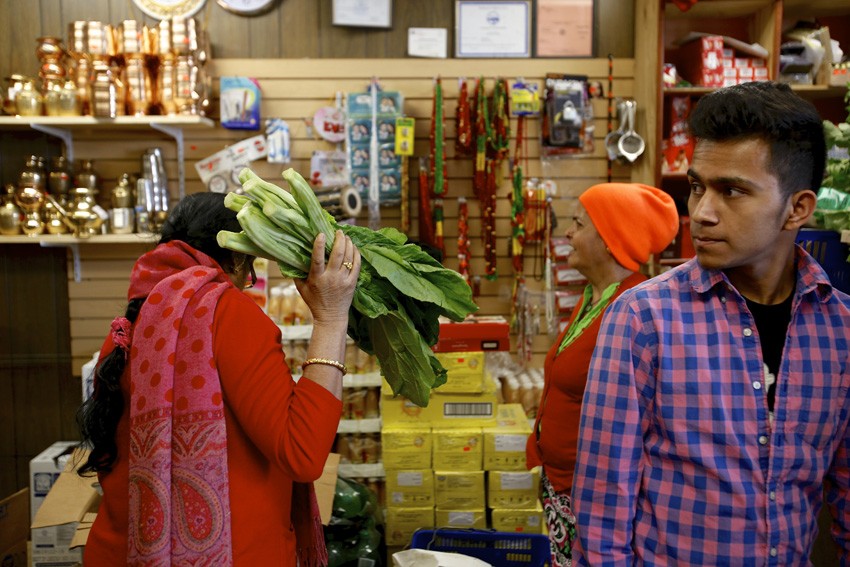
Michael Davis Photo | Syracuse New Times
Baskota helped present the study at last year’s Community Initiative for Mental Health and Suicide Prevention conference in Harrisburg, Pa. “Many people are feeling like they are left behind,” Baskota says. He received training at the conference to screen Bhutanese-Nepali refugees who show symptoms of depression. He adds that as a healthcare worker, he finds it easier for him to screen people who may be at risk.
Yet Baskota also admits that sometimes he won’t know about refugees’ depression unless they reach out or someone else notices. Over tea, they visit them in their homes and sit in their living rooms to discuss possible help. He says that he, Subedi and other members of the Bhutanese Community of Syracuse can knock on their doors at any time, describing the Bhutanese-Nepali refugees as a close-knit community.
“We know everyone, and we all came from the same background and the same camps,” Baskota says. “We try to explain to them that this is not misbehavior. This is something that needs to be treated.”
Depending on the severity of the case, Baskota then directs them to either their primary care provider or a psychiatrist for treatment. He says that most refugees work yet make little money, which causes stress.
“Sometimes people are so depressed they can’t find a job, or they can’t do what they want to do in this country, and they take a path because they think it’s hopeless,” says Ngoc Huynh, job development manager at Catholic Charities of Onondaga County. Huynh also says that many community leaders work as allies or medical interpreters due to the language barrier. “If what they need are professional therapists or counselors, we don’t have enough counselors that speak Nepali,” she says.
As the Bhutanese-Nepali population continues to grow in Syracuse, the refugees want a space where they can find the food they need, as well as a space to speak Nepali and feel part of a unified community. “We all speak the same language and eat the same food, so customers can come here and feel comfortable,” Subedi says of the All Asian Store.
The majority of Bhutanese-Nepali refugees learned British English in the camps. However, many who are older than 50 cannot speak fluent English. Subedi, who fled Bhutan at age 12 and spent 18 years in a Nepali camp, says that much of his parents’ generation did not attend school or learn English in Nepal because they needed to care for their families. He says that his mother and father, both in their mid-50s, never received an English education. As a result, the older Bhutanese-Nepali immigrants have trouble finding jobs in the United States.
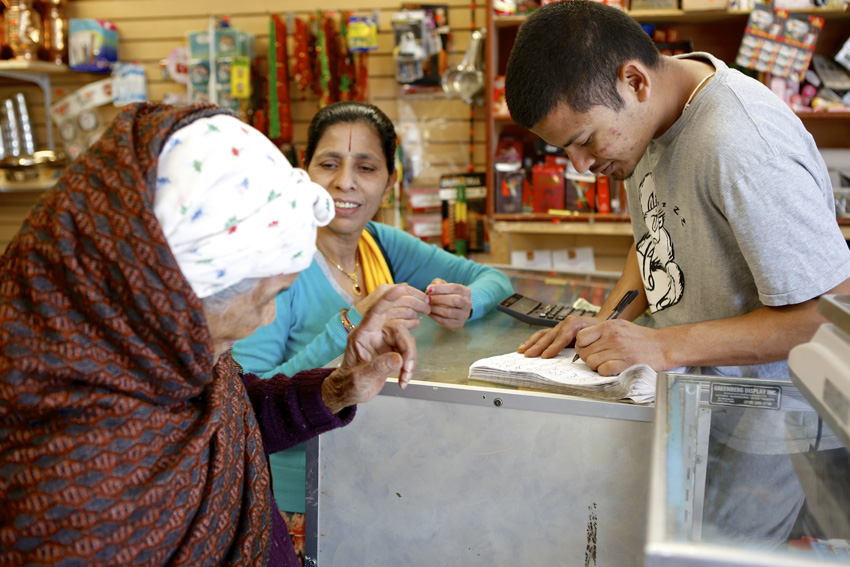
However, even younger members of the community also find American English difficult to learn once they reach our shores. Many are enrolled in ESL classes to improve their English, Subedi says.
Sita Kafley, 25, says she studied British English in the refugee camps. When she arrived in Syracuse in 2012, she could not understand the American accent. She continues to attend English classes at Catholic Charities’ Refugee Assistance Center. She says that she struggles to find employment due to her lack of English fluency.
Over the past two years, she has held a variety of odd jobs, including as a line worker for a chicken company and a housekeeper for a nursing home. She applied for a cleaning position at a hotel but did not hear back. She also has a newborn son, who repeatedly suffers from ear infections. Kafley lies awake many nights to soothe his crying. She says she doesn’t know how she will pay for some of the doctor visits.
Refugees face a greater risk of living on or below the poverty line because many work minimum wage jobs, says Huynh. And once refugees find work, they can no longer receive welfare. Huynh says that most refugee households need two incomes to survive in Syracuse.
“If you’re going to wait for the system to take care of you, it’s not going to work,” Huynh says. “The system doesn’t care if you’re struggling.”
The Bhutanese-Nepali community in Syracuse cares for each other. In the All Asian Store, Phuyel hands almost every customer paan, a Nepali chewing tobacco, which is wrapped in a ball with aluminum foil. Most do not pay for the paan or their groceries immediately. Phuyel keeps records of his customers’ credit in five composition notebooks stacked on the counter. One customer didn’t have enough money to pay for his groceries, so Phuyel wrote down his balance in one of the notebooks.
Whenever Bhutanese-Nepali refugee families have any type of problem, they call Subedi. His phone buzzes and rings relentlessly, and he jumps between conversations in English and Nepali. Before Subedi started his store, he says that the building was charged with 14 safety violations, and he worked for months to solve all of the issues. He now also manages the entire building as an unofficial landlord. Two Nepali families rent the second and third floors, and an American family lives on the fourth floor.
“My job is 24/7 nonstop calling, sometimes in the middle of the night,” he says. He recalls the previous night, when a family called him at 4 a.m. just to talk and ask when he would get to his office the next day. He told them to visit him at InterFaith Works or the grocery store any time.
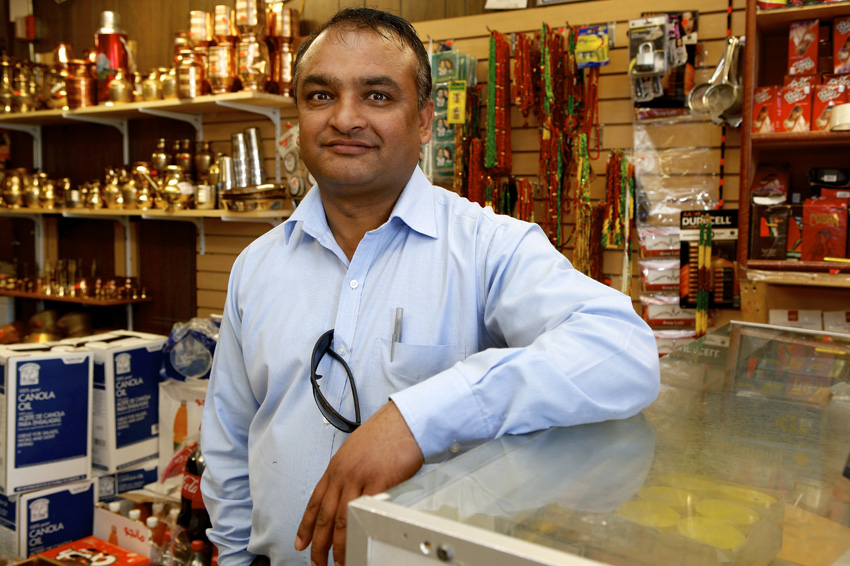
Michael Davis Photo | Syracuse New Times
At the store, a man wearing an “I Love NY” baseball cap picks up a long, green, bumpy vegetable, called karala, and adds it to his pile of groceries on the counter. As he waits for Phuyel to add the total, he drinks a glass-bottled Coke. Subedi says he notices that the Bhutanese-Nepalis assimilate into American culture after a few years. He says he especially worries that the younger generation will forget its history.
But not all teenagers want to forget. Balika Kafley, 17, also stresses the importance of carrying on Nepali traditions. She first resettled in Boise, Idaho, in 2009 and moved closer to her family in Syracuse in 2012. She attends Henninger High School, wears hoodies and jeans, and owns an iPhone.
She loves to dance American hip-hop to Michael Jackson’s song, “They Don’t Care About Us.” She listens to Selena Gomez, watches TV episodes of The Wizards of Waverly Place and Pretty Little Liars, and admits she loves WWE wrestling.
Kafley says she feels both Nepali and American. Like Subedi, she shows concern for her generation. “They think they’re more American,” she says. “I want everyone to know the struggles our community went through in Bhutan and Nepal and to remember everything, like the Nepali language. I don’t want them to forget. I tell everyone: Don’t forget your culture no matter what.”
Kafley teaches her 3-year-old brother the Nepali alphabet. She also knows how to make momos, a Nepali dumpling, from scratch, and she has performed Nepali dance since age 5. Subedi agrees that the community needs to continue to build a sense of interconnectedness: “I am a little concerned about our values. We have very quickly integrated into American culture.”
The BCS focuses on how the Bhutanese-Nepali community can preserve its identity and values in Syracuse, as well as address issues of mental illness. To help realize this goal, Subedi says the BCS hopes to create a community center on the North Side. Subedi and other members of his organization walk door to door almost daily to ask for donations. However, without the support of private donors, Baskota says they struggle to raise the funds.
“They came to this country with a bag of clothes and no English,” says Baskota, who helps with fundraising. “They don’t have a lot of money to give, but a lot of people feel like we need the community center. Everyone has a job and needs to feed their family, but everyone is also hurting for a building to call our own.”
The BCS wants to hold English language and citizenship classes, cultural dance events, and career development and youth mentoring programs in the center. Baskota believes that the next generation will have a great advantage, because most will grow up fully bilingual.
His third-grade son, Anush, 8, can read on a fifth-grade level and his 5-year-old daughter, Aapshana, reads more difficult books than many of her peers. He says he tells Anush: “I came over and only had a couple of dollars in my pocket. I spent it in the airport to buy water for you.” Like his father, Anush practices Hinduism.
Baskota hopes that they can find community in their religion, for which the Bhutanese government persecuted them 25 years ago. He looks forward to building a greater sense of community here in the United States. Subedi also agrees that the Bhutanese-Nepali refugees need the center in Syracuse.
Subedi says if they can raise enough money, they will build the first Hindu temple in Syracuse as part of the center. “It’s not only for those who are working but also for future generations,” he says. “We want to teach them our own identity and values.”
In the All Asian Store, traditional rainbow wedding dresses, called sari, and rolled posters of the Hindu god, Ganesha, sit in cubbies behind the counter. Subedi says that the community needs to preserve all aspects of Bhutanese-Nepali culture, even the daily practice of chewing paan.
Another 20-something customer, Rajan Pradhan, comes to the store at least once every day. Today, he visited four times and came again to chat with Phuyel. He hands Pradhan the supplies to make a fresh packet of paan: tobacco, chunks of a roasted betel nut, a green leaf, sweets and lime paste. He first smears the gooey lime paste on the betel leaf. He then sprinkles a bit of the roasted betel nut, sweets and tobacco. Finally, he wraps the leaf into a neat package and sticks it into his mouth. Phuyel says something in Nepali and Pradhan laughs, the paan bulging out of his cheek.
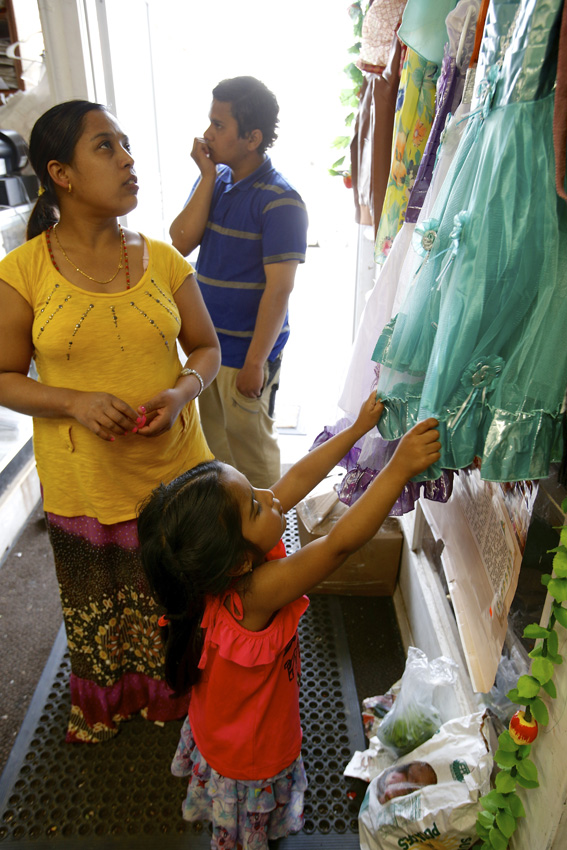
Michael Davis Photo | Syracuse New Times
The Bhutanese-Nepali Refugee Story
Late 1800s
The Bhutanese government began contracting Nepali people to foster cultivation in Southern Bhutan. Thousands of Nepali people emigrated to this area and produced the majority of the food for the country of Bhutan. Many of these immigrants, called the Lhotsampa, spoke Nepali and practiced Hinduism, remaining culturally Nepalese. By 1930, more than 60,000 people of Nepali origin lived in Bhutan.
1958
The Bhutanese government perceived a growing dichotomy between the Bhutanese and Lhotsampa populations. To encourage political and cultural assimilation, the Bhutanese government granted citizenship to the Lhotsampa.
1985
The Bhutanese government revoked the Lhotsampas’ citizenship unless the population met two conditions: to prove they lived in Bhutan before 1958 and that the latest census counted them as legal residents.
1988
The Bhutanese government enacted the “One Nation, One People” policy in efforts to preserve a certain Bhutanese “culture.” This policy enforced that all citizens follow the Buddhist Ngalong ruling class’ language, dress, and social etiquette. As a result, many Lhotsampa lost their citizenship and the use of their language, which the government outlawed in education.
1989-1990
The Lhotsampa attempted to both accommodate and protest. The Bhutanese government targeted the community, including accounts of arrests, rape, and torture. Much of the Lhotsampa fled for Nepal, passing through India. Once they reached Nepal, the community begged for food from the local Nepali people. Diseases and child mortality rates escalated.
1991
The United Nations High Commissioner for Refugees (UNHCR) established seven refugee camps in Nepal.
1991-2007
The Lhotsampa lived and raised families in the Nepali camps. At least a generation of children in the camps learned English and finished school. Although the Nepali government did not give them the right to work in Nepal, this law was not strictly enforced. The UNHCR provided food, clothing, fuel rations, as well as thatched mud huts to the Lhotsampa.
2008
The UNHCR started the “third country resettlement” policy. The U.S. government began accepting thousands of Bhutanese-Nepali refugees. More than 400 resettled in Syracuse.
2015
A 7.8-magnitude earthquake struck Nepal and killed more than 5,000 people on April 25. The worst to hit the country since a 1934 temblor, the earthquake flattened the historic district in the country’s capital and most densely populated area, Kathmandu, and destroyed more than 70 percent of homes in the Lamjung district. Aftershocks continue to jolt Nepal.
To donate and aid Nepali families in need, contact the Red Cross, UNICEF or Doctors Without Borders.
(Sources: Syracuse Catholic Charities, the UNHCR, and the U.S. Geological Survey)


